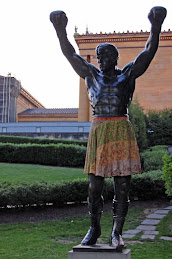Within the last week, I have read two diametrically opposed books.
Marjorie Burns published a book in 2005 titled Perilous Realms: Celtic and Norse in Tolkien's Middle-earth. This scholarly book published by University of Toronto Press is based on the reasoned premise that Tolkien used both Norse and Celtic mythology, folklore, and epics to give his own texts a resonating depth and energy which makes his ostensibly simplistic characters and plot ambiguous and allusive. Burns argues about how Tolkien combines both Norse and Celtic elements to create a balance between the the pragmatic and realistic Norse and the mystic and spiritual Celtic. In her list of works cited, most of the texts Burns gives are translations from the Old Norse or the Celtic or scholarly commentary.
For Celticists intrigued by echoes of Welsh and Irish folklore in Tolkien, Burns deals head-on with a troublesome issue. Tolkien always denied any affection for Irish literature -- considering the land alien and the folklore off putting. But on the other hand, he always expressed a fascination with the music and orthography of Welsh. Burns neatly sidesteps Tolkien's own denials of the Celtic -- as any decent scholar should do -- and goes right ahead arguing that Tolkien employed the model of the Celtic sovereignty goddess when imagining Galadriel, or the Irish sidh mounds when describing the Elvish hidden kingdoms. As I read Burns' study, I wanted to go back and reread certain section of Lord of the Rings as well as my copies of various Old Irish sagas.
The other book I finished was a ballast to the scholarship. This was a novel set in early nineteenth-century Paris by Susanne Dunlap. The title is scurrilous -- Liszt's Kiss. It is a combination of a historical romance, mystery, and musicology. The setting is a rather interesting time when Paris was the center of culture and famous artists and composers lived in close proximity and knew each other -- Chopin, Paganini, Liszt, Delacroix. Dunlap's description of this intense concentration of talent reminded me of early twentieth-century Paris . And Dunlap includes the historically accurate drama and pathos of a cholera outbreak. One of her characters is a medical student who serves at the city hospital. In the course of the novel, he performs emergency surgery. I asked my husband to read that scene to assess the historical accuracy of the description. He agreed it was horrifically accurate and we then had a conversation about the miracle of anyone surviving a surgery before antibiotics or sterile procedure.
I ate up Dunlap's novel in just a day. It was not a demanding read but Dunlap has a marvelously restrained prose when narrating an assignation or a kiss which is refreshing after the otherwise torrid descriptions in contemporary fiction.









No comments:
Post a Comment